how to grow the best-tasting tomato
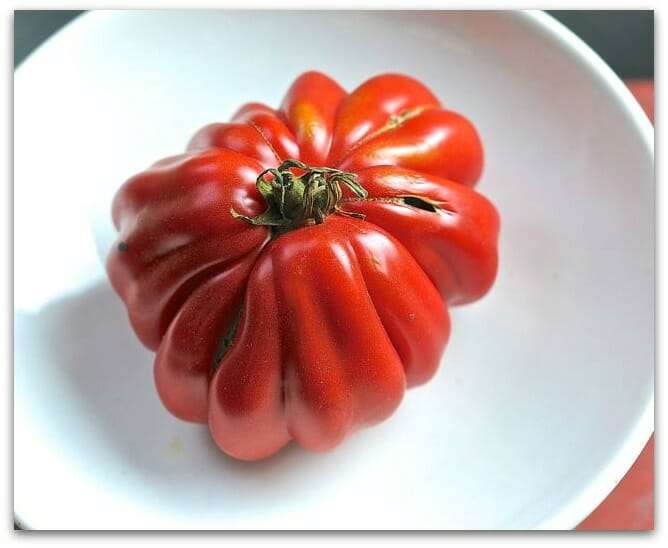 IS IT NATURE (as in genetics) or nurture (as in where and how you raise it) that makes for a tasty tomato? I asked a university breeder and geneticist, and a seed farmer and breeder—each with decades of expertise in Lycopersicon esculentum: How do you grow the best tomato?
IS IT NATURE (as in genetics) or nurture (as in where and how you raise it) that makes for a tasty tomato? I asked a university breeder and geneticist, and a seed farmer and breeder—each with decades of expertise in Lycopersicon esculentum: How do you grow the best tomato?
I’m often asked that question, usually phrased like this: Why didn’t my (insert name of tomato variety) taste as good this year as last?
Getting the best flavor from a tomato is “a matter of lining the genetics up with the environment,” says Tom Stearns, founder of High Mowing Organic Seeds. It’s something he acknowledges that people are more inclined to do with animals than plants—to choose a breed of livestock suited to their region, for instance, but not to choose their tomato or other seeds that way.
But both are living creatures that have adapted over generations to their environments, so the same logic should be applied.
“Here’s how I think,” Stearns says: “The final flavor of a tomato is 60 percent genetics, and 40 percent environment.
“If you have a tomato that was bred and selected for the environment you’re growing it in, then you can get to the pinnacle of that variety’s taste: 100 percent is possible.”
For example, you have maximum potential if you grow a Northeast-bred and -selected variety in the Northeast—meaning it’s not just a variety said to be suited to your area, but that the actual contents of the seed packet you began with were raised in conditions like yours.
“But what if it’s a Florida-produced variety, and you grow it in the Northeast?” says Stearns. “Either the genetics (or the environment) won’t be fully in your favor.” No home run possible.
The same is true with tomato seed grown in conventional agriculture (using synthetic chemical inputs such as fertilizer) versus seed grown organically. Carefully matching up the seed you start with to the cultural conditions in your garden is another environmental or “nurture” factor in the equation.
We all want to start with a tomato variety that is knows for its taste (sorry, supermarket varieties, but you’re not even in the running).
Though “sweeter” tomatoes have more flavor, the experience we call flavor in tomatoes derives from an interaction of multiple factors, including the ratios of sugars, acids, and volatile compounds.
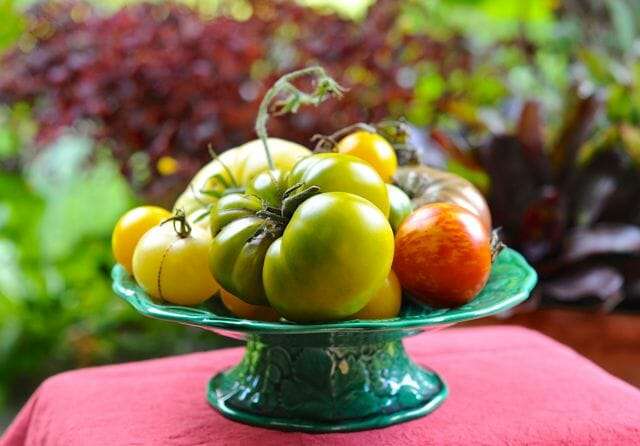
“It might be because the flavor-contributing components, including total soluble solids (TSS), total titratable acidity (TTA) and others, may be in concentrated forms.”
Panthee has been working with molecular biologists from the USDA’s Agricultural Research Service on a project aimed to breed more flavorful commercial tomato varieties—tomatoes that don’t just ripen all at once or ship easily to the supermarkets, the way large-scale farmers prefer, but also taste like, well, a tomato (and not cardboard).
Both Panthee and Stearns agree that environment plays a big role in the flavor of the harvest.
Growing conditions with too much rain or irrigation water would impair taste, says Panthee. “Less rainfall and more sunshine will increase the flavor of tomatoes,” he explains. One environmental reason tomatoes grown commercially have poor flavor relative to garden-grown ones: gardeners use less water.
“Soil types that can hold moisture for a relatively long time (without water stagnation) may improve the flavor of a tomato,” says Panthee, “because it avoids frequent irrigation and helps preserve nutrients.”
In his “40 percent environmental” equation, Stearns also includes these other factors, besides water and light:
“Soil temperature, air temperature, night temperature, extreme swings that occur in temperature—and disease and insect pressure, too,” he says. “But some of these are counter-intuitive: For example, sometimes under pest pressure, the flavor might improve!”
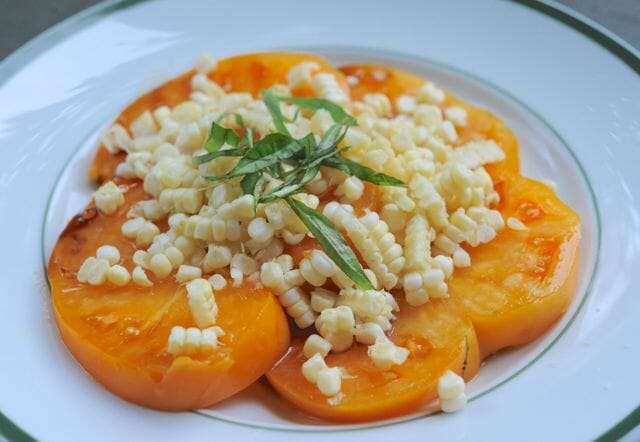
“Tomatoes grown under salt-stress conditions are flavorful, because salt regulates their water uptake,” says Panthee about one of his less-expected research findings. “However, at the same time, salt is toxic to the plant. If the toxic effect can be avoided, growing tomato plants under salty conditions helps to produce flavorful tomatoes.”
With tomatoes as with humans, apparently: everything in moderation—and both nature and nurture figure into the finished product.
 more how-to for tomato growers
more how-to for tomato growers
- 16 things I know about growing tomatoes
- Growing better tomatoes from seed (step-by-step, from seed to transplant)
- Grow healthy tomato plants (staking, spacing, and other “tomato hygiene” to manage against disease and maximize harvest)


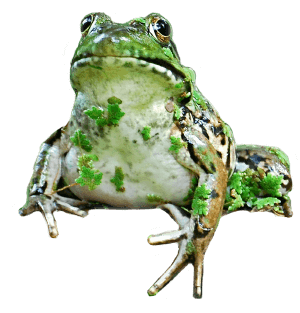
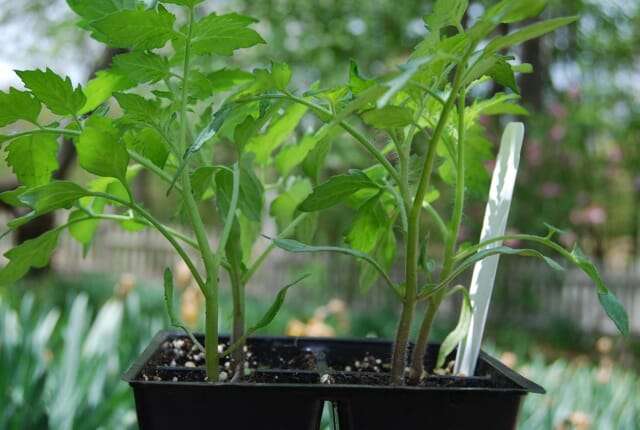


Excellent article, Margaret! I really appreciated and agree with Stearns’ take on regional adaptation and flavor potential. Indeed, the best tomato I have ever tasted was a Costoluto Genovese that was grown for three generations on the same land!
What are your soil strategies for the best tasting tomatoes?
Thank you, Justin. I grow in raised beds, and add lots of my own compost each year. I guess that helps with the even uptake of moisture (the way Dr. Panthee mentioned). In recent years I have sought out regionally adapted seed in a more determined manner — and not just for my tomatoes!
What a timely post as we’ve been talking tomatoes as of late in our household. That comparison chart from High Mowing is very helpful; thanks for sharing the link Margaret. I suspect in past years the hubby and I have watered too aggressively. I’ll share Tom Stearns’s tips with Mr. M today.
I like a newly sliced tomato drizzled with balsamic vinegar over a bed of arugula or other salad greens.
By the way, the weather in south central PA has been gorgeous this weekend and in between gardening chores I’ve enjoyed reading The Backyard Parables in my backyard :)
You have such great taste in reading material, Vanessa. :)
Good article. How would I find put the best tomato for my region? I live in Denver, CO.
Hi, Julie. I might start by asking Seeds Trust (formerly High Altitude Gardens) as they have been at it in the Intermountain region a long time. Their tomatoes.
Here in the Pacific Northwest, growing tomatoes is a challenge because of the warmth these plants need. We can grow several varieties, but they must be well-suited for a cooler summer. The good news for us is, since tomatoes are hard to grow here, the diseases and pests that plague tomatoes in other areas don’t exist (except we have to watch for late blight). I grow mine on my deck, which has a southern exposure, in black pots to keep them warm. There’s a guy in the area who is an expert on tomato growing, and we are fortunate that he offers free instruction. I took a class from him last year, and we had a bumper crop! People who’ve lived in this area have warned me, though, not to expect that kind of yield every year. Challenge accepted!
You have some great seed companies out there that are selecting tomatoes for the PNW, including Uprising Seeds.
Nadine try fedco seeds I believe there in Maine and they specialize in short season varieties. I bought from them for years and they’re pretty great.
As I have a landscaped yard with just a little corner designated for vegetables, I usually buy one “Sweet 100” plant at a local nursery. Even though we have mostly clay soil, that cherry tomato plant grows like crazy and I have tomatoes for the whole summer. I water a lot when planting. After that, I water infrequently…the plant never droops, even in 104 heat, so I know it is drawing water from the clay soil. I’d say I water maybe once a week, if that. My neighbors had regular drips installed on their tomatoes, and they either got few tomatoes, or were struck with insects, such as spider mites. In my humble opinion, too much water weakens the plant, and creates a tomato with little or no flavor.
BTW, I live in California….Sacramento area!
Seems like you are on to something, Linda — especially based on Dr. Panthee’s comments on too much water, etc.
Hi Margaret,
Wondering what variety that first red one you show in this post is. Wanted to try one of those ridged varieties and don’t know which to try. Thanks.
Oh, sorry Amy — it’s ‘Pink Accordion.’
Thanks, Margaret, for an informative, comprehensive article that delves a bit deeper than most How to Grow Fabulous Tomatoes articles we see everywhere this time of year. I can always depend on you for trustworthy information and I appreciate that you turn to many experts for their take on gardening instead of leaning only on your own experience. It really gives your blog more credibility than others. I was curious about the salty soil aspect. Indeed, I have been tossing a handful of epsom salts, eggshells and a fish head (my beloved dad’s secret) in each hole when I plant my tomatoes. I didn’t really understand the science behind it, but now I know why it works! Watering with compost tea once a week lets me grow tomatoes the rest of the summer on pretty much benign neglect! Thanks again for a good column. In the spirit of the Easter Bunny, who comes next week, you are a good egg, my friend.
Jan, I was thinking about the salt factor too, and wondering if a handful of sea salt around the base once might add something without being toxic. I’ve read about Epsom salts being good for thicker-walled peppers, because it’s magnesium. So now I’m wondering if Epsom salts have sodium too, or just are a salt form of magnesium. Chemistry I do not know! (Should have Wiki’d this before writing, sorry.)
I’m not sure but I figured epsom salts had some sodium as well as magnesium in there, hence the word “salts.” But I’m no expert.
Like I said in the story up top — this salt thing isn’t one I am attempting to experiment with in the garden. (You know, like those stunt-driving commercials with the little disclaimer at the bottom: “Do not try this at home!”)
But I will follow up and learn more as the studies continue at NCSU.
if you have access to seaweed, or a seaweed based fertilizer, tomatoes LOVE seaweed and it’s a great way to introduce safe salts. However, that said, so many people now are over-harvesting seaweed from the coasts by the truckload. The oceans need that – so we are messing with the balance when we over-harvest. Maxicrop is one of the bet seaweed – based fertilizers out there.
I like the tomato planting tutorial from Love Apple Farms in Santa Cruz, though it’s kind of a $64 tomato approach. Tomatoes are really difficult to pull off in the damp climate I live in so I wait all year for the dry-farmed Early Girls that arrive at the local organic isle late summer. The flavor has spoiled me for any other tomato so far, as even the local heirlooms here just taste like water – no flavor.
Thanks, Tune. Fish heads and egg shells and bone meal and so on in the hole…here in my wild and woolly area that would mean every wild animal within miles would come hunting! :)
I saw in the picture of your house and patio that you have perfect grass! Could you do a newsletter article on getting a good lawn without herbicides to kill the weeds? I have a large perennial border with grass in front of it and no matter what I do, it is always filled with weeds. How do I get rid of thew weeds? Thanks, Ann
Great article. Here in Maine, a lot of people collect sea weed and add it to the soil. I would think That should have a salt content from the water. I have not tried this yet.
Hello Margaret!
I really enjoyed reading this article about tomatoes. I’ve always thought that it was mostly the environment that affected the taste of the tomato, never gave much thought to the genetic component.
And maybe I’m a bit biased, but I think in Buffalo we grow very tasty tomatoes!
Thanks for the info, quite thought provoking. I also grow in raised beds and add compost each year. I can be quite a sluggard when it comes to watering, so my husband and I put in a drip irrigation system, and the tomatoes do seem to be getting less water.
Nothing I can do about the sunshine, it’s hit or miss here some summers =)
Greensand is a great organic and inexpensive way to add trace minerals to the soil without worrying about salt residue. My husband and I grow luscious tomatoes in containers whose soil we supplement with compost, worm castings, greensand and bonemeal in the spring–after that, all my tomatoes need is an occasional meal of compost tea to flourish in full sun in Westchester, New York. For water, we use drip irrigation on a timer; because we use containers, we need to water regularly.
I have enjoyed reading all of the comments about growing tomato’s. I live in the middle of Georgia and I have had good luck growing tomato’s by putting 10-10-10, (hand full) Lime pellets, Bone Meal, and about a table spoon of Epson salt and cover with about an inch of soil before I set the plant in place in order to keep from burning the plant, then I water well, then after the plant gets about eight or ten inches high, I dig a small trench around the drip line of leaves of the tomato plant and put more 10-10-10, Epson salt, lime pellets, bone meal and cover with soil and mulch well to hold moisture. my rule of thumb is to water with one gallon of water twice a week, ( if there is no rain). Happy gardening.
I live in south central Kansas and have settled on two varieties of tomato, Jet Star and Lemon Boy. I normally plant 6 to 10 plants and if the weather holds usually have enough tomatoes for us and my neighbors and relatives during the growing season. I think both these varieties have great taste, know that at one time Jet Star was the highest recommended tomato variety by Kansas State University, at least for our area. I planted tomatoes late this year, the middle of May, and couldn’t get the short stubby plants I prefer. In fact the plants I had to get were sick, sad looking, but they did finally come out of it and finally are getting a few tomatoes and have a large number set on. My Jet Star are not producing as heavily as they do some years, but doing ok and are going to have abundance from my seven plants in the next few weeks. I use Miracle grow for tomatoes and it seems to work.
This is a very simple approach, but raising tomatoes for home use is not rocket science. I would like to try a few heirloom tomatoes perhaps next year just to see if they do taste better.
We live just north of Victoria, on Vancouver Island, Canada. I’ve not tasted a tomato with ANY flavour at all, since we moved here 23 years ago. A very knowledgeable English gardener in our garden club said that tomatoes need HEAT 24-7 to develop flavour. My dad grew some of the most amazingly flavourful tomatoes in Toronto, Canada. We can buy the most perfect specimens in the shops here, but sadly, none have any flavour at all.
Dispite the stern warnings of my “knowing” friends, I just planted 52 heirloom tomatoes on the banks of Bayou Terrebone which has salt water fish in it. I was hoping to use the water because town water is tweaked for brain-eating amobia so it’s highly toxic to life forms. I have an undersink reverse osmosis for me but it can’t handle irrigation duties. You information regarding salt for taste was music to my ears because I know elephant ears are primarily freash water plants and some are being invasive across the bayou. A little salt will have me selling out at the farmer’s market.
It was a surprise to me but fascinating to learn about the salt, I agree!